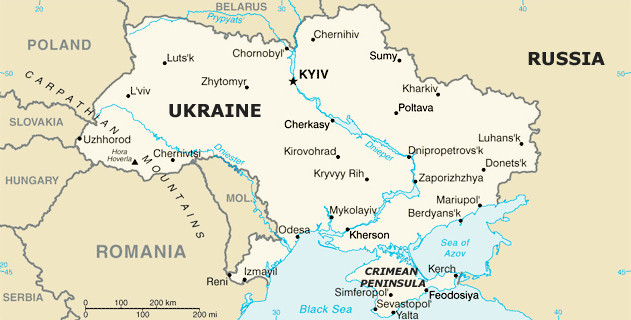The Russian Military Buildup on Ukraine’s Border | An Expert Analysis

(Kennan Institute – wilsoncenter.org/program/kennan-institute – Igor Zevelev – April 15, 2021)
Global Fellow; Former Professor at George Marshall European Center for Security Studies; Former Director, MacArthur Foundation, Moscow Office
The conflict in eastern Ukraine, never properly frozen, could have become a full-scale regional war in March-April 2021—and yet it did not. The tensions in the region began to deescalate after President Joe Biden spoke with President Vladimir Putin on April 13. A future summit meeting may give peace a chance if the conflict resolution is put into a broader context of U.S.-Russia engagement. Without normalization of relations between the two countries, the prospects for peace in Ukraine are dim.
Moscow conceptualizes and narrates the conflict not as a Russian-Ukrainian issue, but as a clash between Russia and the West on the territory of the Russian world. The Ukrainian people—who, Putin believes, are one with the Russian people—are therefore not a party to the conflict. The Kremlin regarded the 2014 revolution in Kyiv as a coup d’état organized by the West on the Russian world’s ground. In Putin’s words, “with Ukraine, our Western partners have crossed the line. . . . Russia found itself in a position from which it could not retreat. If you compress the spring all the way to its limit, it will snap back hard.” Western policies toward Eurasia in the more than three decades since the collapse of the Soviet Union have only strengthened Russian anxieties. Moscow is confident that the main goal of the United States and Europe in Eurasia is the containment of Russia. These Western policies are seen as an attempt to deny Russia its historic mission and a role as a “natural” regional hegemonic power.
In the spring of 2021, Russia stationed the highest number of troops along Ukraine’s border since 2014. Russia’s defense minister said that the country’s massive military buildup was part of readiness drills amid what he described as threats from NATO. Indeed, one of the largest U.S. Army-led military exercises in Europe in decades kicked off in March and will run until June, with 28,000 total troops from 27 nations taking part in it. The “Defender Europe 2021” exercise will include “nearly simultaneous operations across more than 30 training areas” in a dozen countries.” In spite of the dangerous military buildup on both sides, the U.S. intelligence community’s Annual Threat Assessment, issued only four days before Biden’s conversation with Putin, said that “Russia does not want a direct conflict with US forces… Russia seeks an accommodation with the United States on mutual noninterference in both countries’ domestic affairs and US recognition of Russia’s claimed sphere of influence over much of the former Soviet Union.”
The United States, Russia, and Ukraine could find a way to present the emerging chance for deescalation as a win-win-win situation for all parties concerned. Washington may say that “America is back”—President Biden voiced concerns over the sudden Russian military buildup in occupied Crimea and on Ukraine’s borders, called on Russia to deescalate tensions, and thereby prevented the outbreak of war. Moscow, in turn, may say that Biden’s proposal of a summit meeting with Putin in the coming months proves that the Russian show of military force and clear demonstration of will were enough to force America to recognize Russia’s role in the world. Kyiv, for its part, may say that the United States and NATO offered support to Ukraine in its conflict with Russia and stood firmly behind its sovereignty and territorial integrity. Both Russia and Ukraine got what they wanted from the United States. The United States got what it wanted most: a renewed image of itself as a global leader. Meanwhile, around 14,000 people have died in the war, and prospects for conflict resolution remain unclear at best.
[article also appeared at wilsoncenter.org/article/russian-military-buildup-ukraines-border-expert-analysis]
